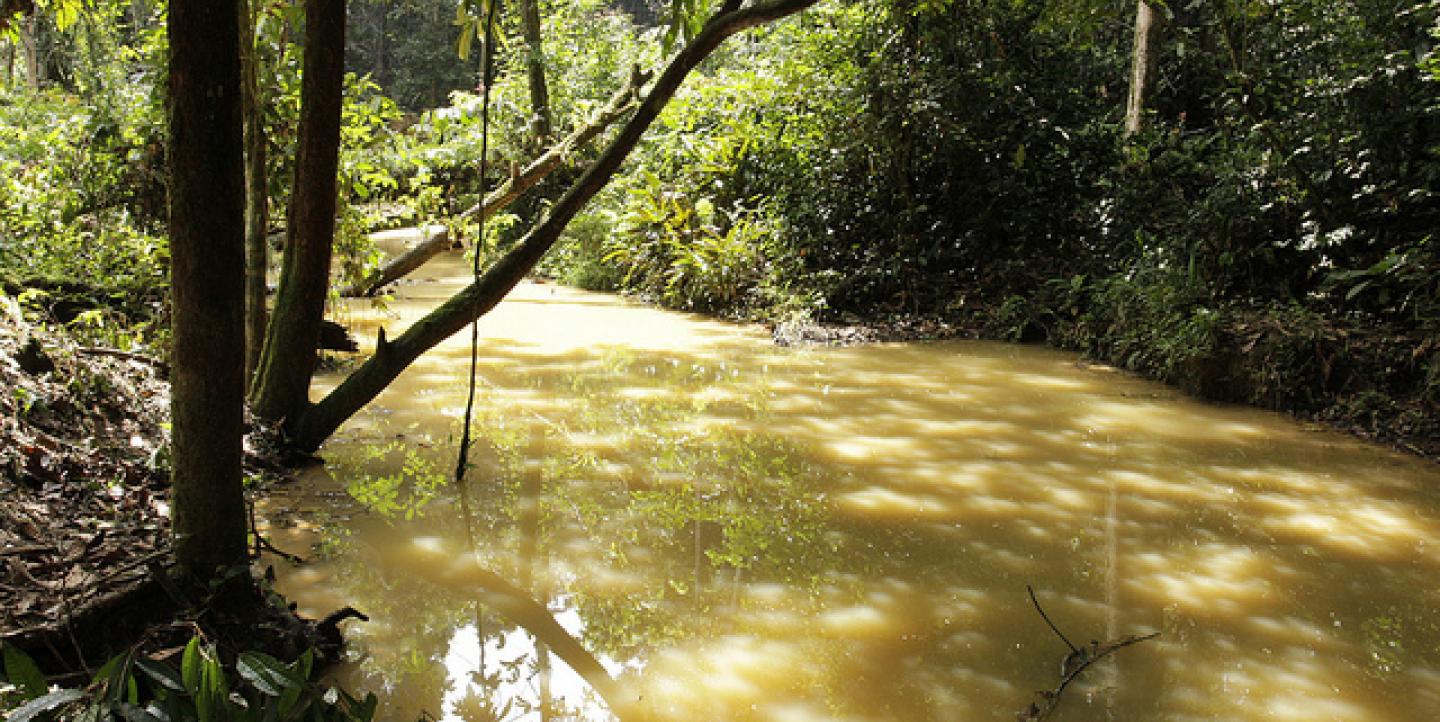Jimmy Carrillo works at the Peruvian Society of Environmental Rights (SPDA), which has a long history of academic and journalistic investigation. One of its principal concerns is illegal mining — not only in Peru, but across South America at large.
Like many activist-oriented organizations, SPDA works hard to connect with an ever-bigger audience, motivating people to not only feel concern about environmental issues, but to take action.
That was how Carrillo came to direct an ambitious multimedia project called “Las Rutas del Oro,” (“The Gold Routes”), an English- and Spanish-language web documentary launched in 2015 that incorporates video, photos and more to educate the public about illegal gold mining in Peru and other Amazon basin countries.
Journalists Óscar Castilla, Nelly Luna and Fabiola Torres López were responsible for reporting, but the project required half a dozen more experts from diverse fields to realize its final form. We spoke with Carrillo via email about the process of making “Las Rutas del Oro” and the impact the site has had.
IJNet: What resources did you need to execute a project as ambitious as “Las Rutas del Oro”?
Jimmy Carrillo: The main resource is human. SPDA has a group of journalists who work within the organization; they were the nucleus of this project, in charge of the graphics, texts, video and general production and direction. But this isn’t enough to realize a project as innovative as this one. You need to look for alliances and work collaboratively. In our case, it was thanks to the financial support of IUCN Netherlands that we could form an alliance with OjoPúblico for investigative journalism and with Racontr, French developers with years of experience making web documentaries who had faith in our project from the start.
What were your goals and how do you discern if you’ve met them?
Above all, “Las Rutas del Oro” is intended to provoke debate and interest regarding the increase in illegal mining in the region. If you visit the website, you’ll see some of the goals we’ve clearly met since the web documentary’s launch. These include the number of visits to the site; social media activity (thousands of interactions on Twitter and more than 10,000 followers on Facebook); reactions from key experts, businesspeople, and politicians; and coverage in print media.
All of this was possible because the project also includes investigative reports that we’ve published in newspapers and magazines in South America, as well as a documentary that’s [been] shown at some film festivals. All of this has had an impact among politicians and businesspeople in the illegal mining debate.
We think that this —along with the fact that we’ve won some prizes for the web documentary (the National Journalism Prize, the National Environmental Prize) —signifies that we’ve achieved our initial goals.
Tell us a bit about the process of carrying out this project.
With a subject as vast as this one — and with such a large potential audience, given the variety of countries involved — we needed to think about a product that could be interesting for distinct audiences. We wanted to use the Internet and its possibilities of [information] diffusion. We also thought that we needed to not only present quality journalistic content, but also that it should be presented in a distinct format.
After deciding that format would be the web documentary came the discussion about how to make it. My decision was to utilize our strength, which is video, to narrate all the stories.
When the project was approved, the possibility of traveling to all five countries was also approved. We developed a pre- and post-production plan. In pre-production, we did research through literature and interviewing experts about illegal mining in each country. They helped us with contacts and itineraries, which helped with planning the shot list and the script. Meanwhile, the team [of journalists] worked on the graphics and another worked on programming.
Then came post-production: transcribing, fact-checking, editing text and videos, adding music and taking extra shots. The whole process lasted months.
How did you promote the project so it would have the greatest visibility?
It was logical to use the Internet, and we began creating buzz before the launch. The strategy included creating a blog that would preview the research we were doing and offer information about the central theme. Our partners also made mention of the project. They made memes and did publicity before and after the launch. The web documentary was mentioned in various media outlets and at academic debates about illegal mining.
What’s your advice for journalists who want to do similar projects?
Ambitious projects are good, but one can’t realize a journalistic project of this magnitude without forging a group of journalists capable of carrying it forward and looking for the right partners. Nobody is an expert in everything. It’s only through collaboration that you can achieve something like this.
Image CC-licensed by Flickr via Program on Forests (PROFOR).

